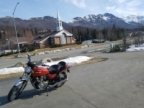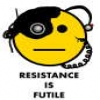1978 KZ650 carburetor leaks
- NEinAK
-
 Topic Author
Topic Author
- Offline
- User
-

Registered
- Posts: 1
- Thanks: 0
1978 KZ650 carburetor leaks
27 Apr 2017 14:45
I had recently bought a 1978 KZ650, and, overall, it has worked great. However, it has smelled strongly of fuel vapors since I had purchased it. Recently I found the source, which is that the relief valves on all four carbs are actively bleeding fuel. If it were just one of them, I would assume that it was a stuck float or leaking seal, but, considering that all four seem to be having the same problem, I don't think that is the case. So, in the end, my question is what may my problem be? I know too much fuel seems to be flowing into the carbs, but I don't know why. It it a bad petcock, or something else? Thanks
Please Log in or Create an account to join the conversation.
- 650ed
-

- Offline
- User
-

Registered
- Posts: 15339
- Thanks: 2833
Re: 1978 KZ650 carburetor leaks
27 Apr 2017 15:19
The KZ650 carbs do not have "relief valves." Do you mean they are leaking from the overflow orifices on the bottom off the carb bowls? If so, take a look at the following.
Fuel coming out of the overflow hose (the little hose on the bottom of the carb) is the common symptom of the 3 possible problems described below. Remember - NO SMOKING or other activities that could ignite the fuel while working on carbs!
The float valve is not sealing. This may be (and probably is) just a matter of some minor dirt in the float valve and is very simple to remedy and can be done with the carbs still on the bike. Turn off fuel; drain carb by loosening big brass screw near bottom; and remove the 4 little screws on the bottom of the carb bowl. This will enable you to remove the carb bowl. You will then see the float. If you carefully remove the float you will see a stubby little needle that mates with a brass orifice; together, these two pieces are the float valve. Assuming there is no obvious damage to the needle or seat, use a Q-tip and some carb cleaner to clean the seat of the orifice and the needle. Be careful not to bend the tang that is attached to the float. This tang is the piece that the bottom of the float valve needle rests upon, and it determines the fuel level in the bowl, so bending it will change the fuel level. With the float valve cleaned it should no longer leak. To prevent a re-occurrence a quality inline fuel filter should be installed between the fuel tank and carbs. If there was damage the needle and seat should be replaced as a set; they are available.
The brass overflow tube inside the carb bowl is damaged. When you remove the carb bowl you will see a brass tube attached inside and rising toward the top of the bowl. This is the overflow tube and it leads directly to the overflow nipple on the bottom of the carb. Normally, the fuel level within the bowl rises somewhat close to the top of this tube. If the tube becomes cracked or separates from the bottom of the carb bowl fuel will flow through it and out through the overflow hose. Checking the condition of the tube is very easy after you have removed the carb bowl from the carb. Simply hold the bowl level and fill it up near the top of the tube with water or alcohol and see if it leaks. A slight crack in the brass overflow tube can be difficult to find. You can connect a rubber tube to the overflow nipple, fill the bowl with water, put finger over the open end of the brass overflow tube and blow in the rubber end and look for bubbles. If it does the best remedy is to replace it although some folks have found creative ways to repair them.
The fuel level is set too high. This condition occurs when someone has bent the float tang as mentioned above. This condition can be checked using what is referred to as the "clear tube test." The test involves attaching one end of a clear piece of flexible tubing to the carb drain hole and holding the other end of the tube above the bowl/carb joint. When the fuel is turned on it should rise in the tube to a level 2.5 - 4.5 mm below the bowl/carb joint. If the fuel rises higher than that level it may run into the cylinders or over the upper end of the brass overflow inside the carb bowl (mentioned above) in which case it will run out the overflow hose. This condition is corrected by removing the float and gently bending the tang to raise the float valve needle position. Doing this may take several tries before achieving the desired fuel level.
Correcting each of these three conditions involves removing the carb bowl. This task can be made easier if a short screwdriver bit is used, and depending on which carb you are fixing a mirror may help you locate the screws on the bottom of the carb bowl. Also, it is not a bad idea to have a new carb bowl gasket available in case the old gasket is damaged while removing the carb bowl. Ed
Fuel coming out of the overflow hose (the little hose on the bottom of the carb) is the common symptom of the 3 possible problems described below. Remember - NO SMOKING or other activities that could ignite the fuel while working on carbs!
The float valve is not sealing. This may be (and probably is) just a matter of some minor dirt in the float valve and is very simple to remedy and can be done with the carbs still on the bike. Turn off fuel; drain carb by loosening big brass screw near bottom; and remove the 4 little screws on the bottom of the carb bowl. This will enable you to remove the carb bowl. You will then see the float. If you carefully remove the float you will see a stubby little needle that mates with a brass orifice; together, these two pieces are the float valve. Assuming there is no obvious damage to the needle or seat, use a Q-tip and some carb cleaner to clean the seat of the orifice and the needle. Be careful not to bend the tang that is attached to the float. This tang is the piece that the bottom of the float valve needle rests upon, and it determines the fuel level in the bowl, so bending it will change the fuel level. With the float valve cleaned it should no longer leak. To prevent a re-occurrence a quality inline fuel filter should be installed between the fuel tank and carbs. If there was damage the needle and seat should be replaced as a set; they are available.
The brass overflow tube inside the carb bowl is damaged. When you remove the carb bowl you will see a brass tube attached inside and rising toward the top of the bowl. This is the overflow tube and it leads directly to the overflow nipple on the bottom of the carb. Normally, the fuel level within the bowl rises somewhat close to the top of this tube. If the tube becomes cracked or separates from the bottom of the carb bowl fuel will flow through it and out through the overflow hose. Checking the condition of the tube is very easy after you have removed the carb bowl from the carb. Simply hold the bowl level and fill it up near the top of the tube with water or alcohol and see if it leaks. A slight crack in the brass overflow tube can be difficult to find. You can connect a rubber tube to the overflow nipple, fill the bowl with water, put finger over the open end of the brass overflow tube and blow in the rubber end and look for bubbles. If it does the best remedy is to replace it although some folks have found creative ways to repair them.
The fuel level is set too high. This condition occurs when someone has bent the float tang as mentioned above. This condition can be checked using what is referred to as the "clear tube test." The test involves attaching one end of a clear piece of flexible tubing to the carb drain hole and holding the other end of the tube above the bowl/carb joint. When the fuel is turned on it should rise in the tube to a level 2.5 - 4.5 mm below the bowl/carb joint. If the fuel rises higher than that level it may run into the cylinders or over the upper end of the brass overflow inside the carb bowl (mentioned above) in which case it will run out the overflow hose. This condition is corrected by removing the float and gently bending the tang to raise the float valve needle position. Doing this may take several tries before achieving the desired fuel level.
Correcting each of these three conditions involves removing the carb bowl. This task can be made easier if a short screwdriver bit is used, and depending on which carb you are fixing a mirror may help you locate the screws on the bottom of the carb bowl. Also, it is not a bad idea to have a new carb bowl gasket available in case the old gasket is damaged while removing the carb bowl. Ed
1977 KZ650-C1 Original Owner - Stock (with additional invisible FIAMM horn)
The following user(s) said Thank You: NEinAK, jeffwerner, latent
Please Log in or Create an account to join the conversation.
- TexasKZ
-

- Offline
- Platinum Member
-

Registered
- Posts: 8051
- Thanks: 2574
Re: 1978 KZ650 carburetor leaks
27 Apr 2017 19:54
I would respectfully add to 650Ed's post that the fuel valve, aka petcock, may also be leaking. If so, a careful cleaning and replacement of the rubber bits usually cures that problem.
If the carbs were in perfect nick, there would be no real need for the fuel valve, but in the real world, tiny bits of dirt and rust can foul a float valve, making a properly working fuel valve a real life saver. A high quality fuel filter is also a really good idea.
If the carbs were in perfect nick, there would be no real need for the fuel valve, but in the real world, tiny bits of dirt and rust can foul a float valve, making a properly working fuel valve a real life saver. A high quality fuel filter is also a really good idea.
1982 KZ1000 LTD parts donor
1981 KZ1000 LTD awaiting resurrection
2000 ZRX1100 not ridden enough
www.kzrider.com/11-projects/620336-anoth...uild-thread?start=24
1981 KZ1000 LTD awaiting resurrection
2000 ZRX1100 not ridden enough
www.kzrider.com/11-projects/620336-anoth...uild-thread?start=24
Please Log in or Create an account to join the conversation.
Moderators: Street Fighter LTD
